Latest Sustainability Innovations For Mother Earth’s Survival 2022
As an Amazon Associate, Ecotero earns from qualifying purchases.
This is a quick update for the latest sustainability innovations and various green technology developments in 2022.
As you might be well aware, the industrialization and advancement of our society has caused countless harms to the environment.
And if we want our kids and their children’s children to still have a livable planet in the future, it only makes sense that we find ways to protect and save mother Earth.
Fortunately, it’s not too late.
With the aid of our advanced knowledge and technology, below are the latest sustainability innovations that might help this planet survive longer.
Let’s take a look at the exciting future of sustainability.
Sustainable Innovations for Cleaner Energy
1. Night-time Solar Panels
One of the issues of current solar panels is that they are inefficient to use since they can only generate energy when the sun is up.
But guess what?
As of April 2022, Researchers at Stanford University have invented a breakthrough solar panel that can generate electricity at night!
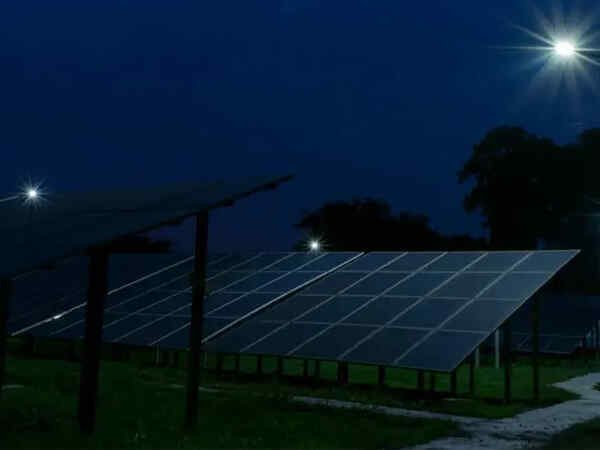
Sid Assawaworrarit (an electrical engineer and PhD candidate at Stanford University) and his colleagues have created a device that allows regular solar panels generate electricity using the fluctuating temperature of ambient air – allowing said solar panels to generate energy even at night.
The device is called a thermoelectric generator and it has the ability to catch the heat flowing between the warm air and the solar panel and turn it into clean energy.
Assaworrarit’s team is currently able to obtain about 50 milliwatts per square meter of solar panel at night, enough to power a small device like a smartphone or LED light.
And while it’s true that the current design of solar panels isn’t sustainable, this innovation opens up a whole new potential for solar panels and how they can become a cleaner, more sustainable, renewable energy source.
2. Transparent Solar Panels
Michigan State University (MSU) researchers found a way to make transparent solar panels that could turn everyday products into power generators.
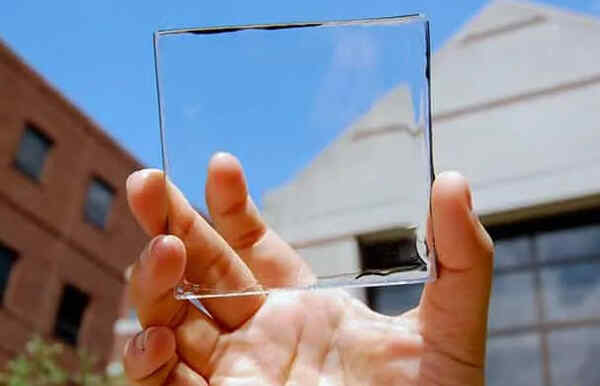
How it works is that the transparent solar panel selectively harnesses a portion of the solar spectrum that is invisible to the naked eye, while allowing the normal visible light to pass through.
With this breakthrough, harnessing solar energy will no longer require extensive land parcels or unsightly roof spaces.
Now, windows in offices and homes made with transparent solar panels can literally generate electricity from – even the screens of laptop and mobile devices!
Researchers estimate that windows in skyscrapers made with transparent solar panels could provide more than a quarter of the building’s energy needs without changing its look.
3. Wind Turbine Wall
Who says the only way to generate energy with wind is through bulky turbines in the ocean or large open fields?
Designed by Joe Doucet, a sought-after art designer, entrepreneur, inventor and creative director in America, the wind turbine wall is a stylish sustainability innovation made up of an array of rotary blades.
The wall is currently 8 feet tall and 25 feet wide but can be scaled up.
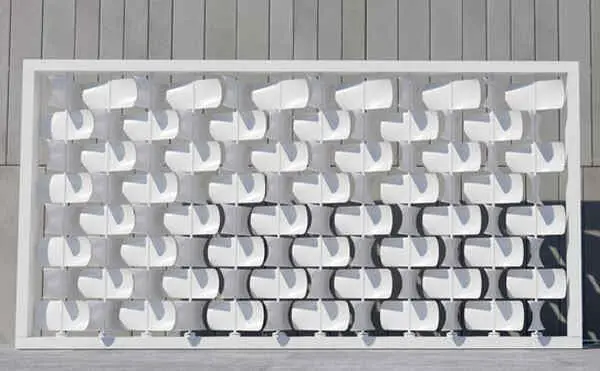
The rotary blades spin individually with wind and drive a mini generator that creates electricity stored in a battery to be used when needed.
This technology opens up tons of possibilities to harness wind energy, and allows average homeowners and businesses to generate energy without the need to install large and expensive wind turbines.
4. Nuclear Waste “Lifetime” Batteries
Sick of needing to charge your smartphone every now and then?
Or perhaps you want to switch to an electric car but heard it’s a hassle to charge its batteries.
Well, that’s about to change. Imagine a world where you wouldn’t have to charge your battery for decades.
A Silicon Valley-based company NDB (Nano Diamond Battery) has developed a self-powered battery made from nuclear waste.
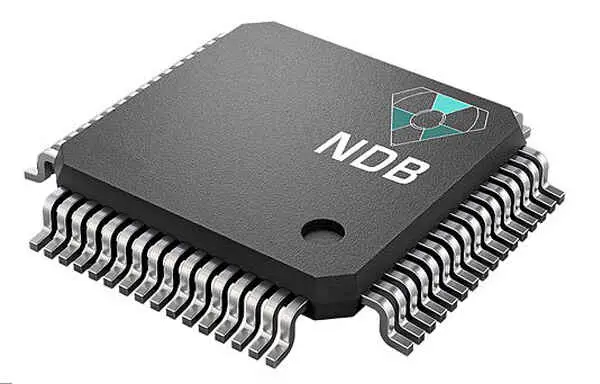
Besides the fact that their battery is made from nuclear waste, it is said to last for up to 28,000 years which will greatly reduce the number of old unusable batteries dumped in landfills.
NDB also guarantees the battery is safe and emits less radiation than our body.
NDB has already completed a proof of concept for their nuclear waste batteries and plans to build their first commercial prototype once its labs have resumed operations after the COVID-19 pandemic.
5. Bladeless Wind Turbines
Vortex Bladeless is an ingenious sustainable innovation to harness energy from wind.
It harnesses wind energy using a bladeless technology that consists of a cylinder fixed vertically with an elastic rod.

The cylinder oscillates on a wind range, and the oscillation generates electricity through an alternator system.
Basically, Vortex Bladeless is a wind turbine which is not actually a turbine.
Vortex Bladeless has no gears or bearings, and doesn’t need oil to function, drastically reducing manufacturing and maintenance cost.
In sustainabability’s standpoint, it has a significantly lower carbon footprint compared to regular wind turbines and is designed to be less harmful to birds and wildlife.
6. Sustainable Traffic Energy Generator
Enlil is a smart vertical axis wind turbine project that transforms highways and BRT Systems into renewable energy sources.
It is the first vertical smart wind turbine designed to harvest both the energy from the natural wind, as well as wind created by passing vehicles!
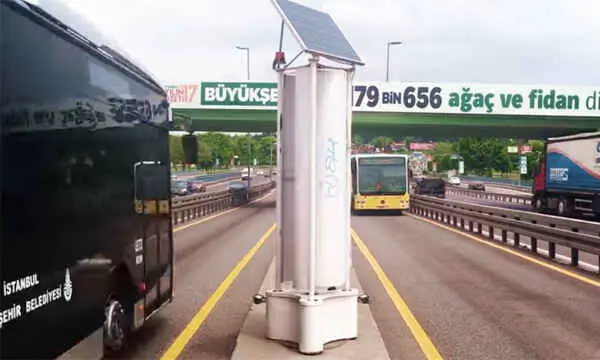
Besides generating energy along the highways, Enlil also has an integrated SMART system which enables the addition of modules such as tools to measure CO2 levels, data collection, traffic management systems, earthquake detection, and built-in Wi-Fi station.
7. Seaweed-Inspired Renewable Energy Generator
The answer to a green, renewable energy might just be possible thanks to oceanic waves.
Researchers in ACS Nano have developed flexible power generators that efficiently convert surface and underwater waves into electricity by mimicking the way seaweed sways.
This is made possible by using triboelectric nanogenerators (TENGs), which rely on surfaces coming in contact to produce static electricity to harvest low-frequency, low-amplitude wave energy.

The electricity generated can then be used to power marine-based devices like floating buoys and submerged sensors instead of relying on batteries which need to be constantly replaced.
Sustainable Innovations for Farming
8. Artificial Glaciers
Climate change has a particularly dire effect in the Indian region of Ladakh.
It causes natural glaciers to shrink and makes rainfall and temperatures unpredictable for local farmers who rely on a steady supply of water to irrigate their crops in spring.
To help farmers in the region, engineer Sonam Wangchuk has invented a way to bring the glaciers to the people and provide them a steady supply of water in spring.
Sonam built an “ice stupa,” an artificial glacier.

The ice stupas serve as water towers that can store winter meltwater and provide farmers with a steady supply of water for spring planting.
And while ice stupas might not be a direct solution to stop climate change, it gives farmers in drier climates a chance for a bountiful harvest.
Moreover, ice stupas also help prevent flash floods from sudden rains.
The irrigation water from the ice stupas could help revegetate dried out hillsides to soak up rain.
9. Underwater Farming
Decades of industrial farming have taken a heavy toll on the environment.
For starters, wide areas of forest have been cleared to make way for crop and animal farms, not to mention the massive application of chemical fertilizers and herbicides.
The possible solution: Underwater farming.
Scientists and entrepreneurs proposed that underwater farming could help address these issues.
With underwater farming, no pesticides are needed to be applied to crops.
Created by diving company Ocean Reef Group in 2012, the underwater farming project consists of six air-filled plastic pods, or biospheres, anchored at the bottom of the sea.
Plastic pods are suspended at different depths and equipped with sensors to measure carbon dioxide and oxygen levels, humidity, air temperature, illumination, and everything else the crops need to thrive.

The underwater farming project has already found success, and has already yielded everything from tomatoes, beans, mushrooms, lettuce, orchids and aloe vera plants using hydroponic techniques.
The UN estimates the world could easily be fed if we used just 2% of the oceans for sustainable farming.
If successful, underwater farming has the potential to produce more food and eliminate the need for pesticides, reduce water usage, and reduce carbon emissions.
10. No Heating Farming
Raising crops in colder climates is challenging and energy-consuming – until now.
A Chinese agronomist Dong Jianyi helped Canadian greenhouse grow cucumbers, lettuce, peppers, tomatoes, and other crops in the frigid Alberta without using a single watt!

This is made possible by a steel frame 300-foot long, 30-foot wide greenhouse with two polyolefin plastic roofs.
It has an electric motor that allows operators to extend and retract an insulating blanket to trap heat absorbed during the day and keeps the interior space temperature at optimal level compared to the outside temperatures.
The greenhouse also has a 24-inch thick clay wall that captures light more easily from the sun during daytime and radiates heat into the interior space during night time, ensuring the plants can survive winter temperatures.
Dong Jianyi’s knowledge of this no-heating farming technique roots from his origins.
In China’s cold north, growing crops requires innovation, and passive greenhouses which don’t use electricity are common in that region.
In the last year 2021, Dong grew 29,000 pounds of tomatoes while saving around $30,000 in energy and heating costs!
11. Vertical Farming
Vertical farming allows bountiful crop harvest while using smaller resources.
The method involves cultivating plants stacked upwards, usually within buildings, taking less space than traditional farming.
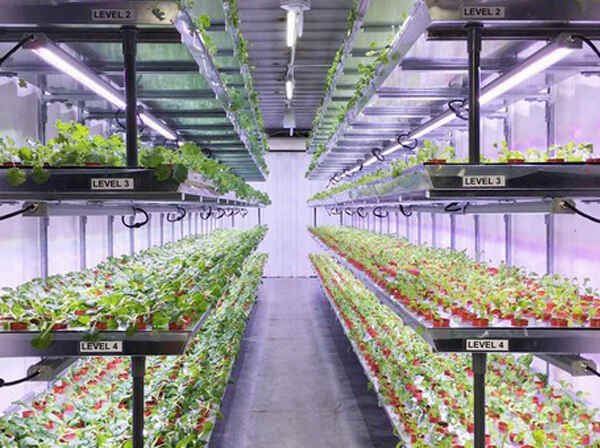
Vertical farming only uses about 10% of the amount of water, nutrients and fertilizers, compared to traditional methods.
And since the water is clean after usage, it can be recycled and reused, reducing costs and minimizing agricultural waste.
Another benefit of vertical farming is the fact that your yield doesn’t rely on weather conditions and you can achieve consistent year-round crop production amidst adverse weather conditions.
And there’s more.
Vertical farming also reduces the amount of fossil fuels needed for traditional farming equipment to sow, fertilize, weed, or harvest crops.
Ocean Vertical Farming
As a fisherman in Newfoundland found a way to apply vertical farming in the ocean.
Bren Smith installed horizontal ropes on the water’s surface, anchored to hurricane-proof floats, that connect to lines underwater supporting seaweed crops.
The system is interspersed with hanging net enclosures allowing scallops and mussels to grow.
The oceanic vertical farm also provides significant benefits other than a food source.
It serves as a storm-surge protector and as a habitat for marine wildlife.
Way back in 2013, Smith established the nonprofit organization GreenWave to train new farmers and provide them with two years of support.
12. Micro Farming
Similar to vertical farming, micro farming is a method of growing crops in limited spaces.
It is like an upgraded home garden with much more potential.
A micro farm is a great way for average consumers to produce food for their consumption or for profit.
Furthermore, a micro farm will also reduce the need to go outside to buy groceries, saving our environment from harmful emissions produced by transport vehicles.
Sustainable Innovations to Counter Climate Change & Reduce Carbon Emissions
13. Bamboo Cooling Tower
There are many eco-friendly bamboo products.
But have you heard of a bamboo aircon?
AREP, a french firm developed a low-tech bamboo prototype that can be used as an effective and affordable solution to sustainably cool down cities.
This sustainable cooling device functions using what is known as the adiabatic cooling principle, and is ideal in cooling down outdoor spaces such as train stations, public squares, and pedestrian streets.
The bamboo cooling tower is made with an array of bamboo poles arranged in an hyperboloid shape for structural stability.
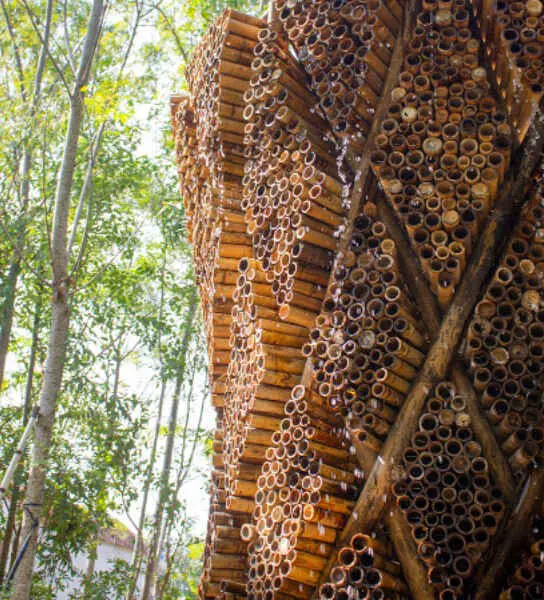
Between the main bamboo poles sits a medium on which water flows and at the center is a blower that captures the hot air from above and pushes it down to lower levels.
As hot air passes the water in the main poles, air naturally cools down thanks to the effect of adiabatic principle.
When AREP tested the device, they succeeded in dropping the temperature of air by 6°C, from 30°C to 24°C.
This proves the viability of the design and how this bamboo cooling tower can become a sustainable, low-tech, and low-cost aircon alternative in dryer climates.
14. Solar Desalination Device
It’s sad to note that the fresh water supply in the world is dwindling.
But what if you can get fresh water from sea water by utilizing solar energy?
Scientists at Rice University might just have the answer.
A federally funded research effort to revolutionize water treatment has come up with an innovative technology that uses energy from sunlight alone to turn saltwater into fresh drinking water.
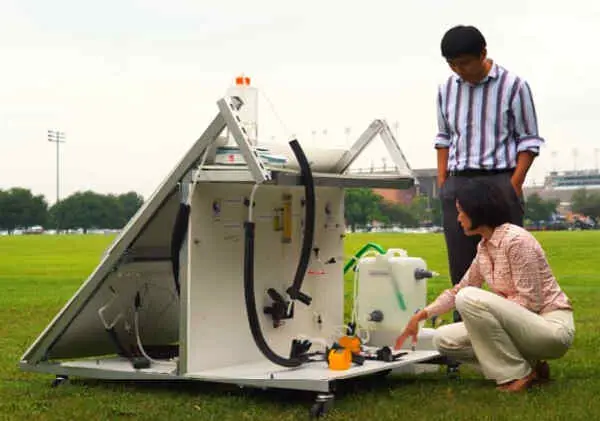
The device is a desalination system that uses a combination of membrane distillation technology and light-harvesting nanophotonics.
The device is capable of providing sufficient clean water for family use and it can be scaled up to provide water for larger communities as well!
Imagine the impact this device could have on areas with drought and scarce potable water.
15. Seed Cocoon
As a solution to reforestation, the Land Life Company company developed a seed cocoon.
It is a portable tree planter made from recycled cartons with a hole in its center for a seedling.
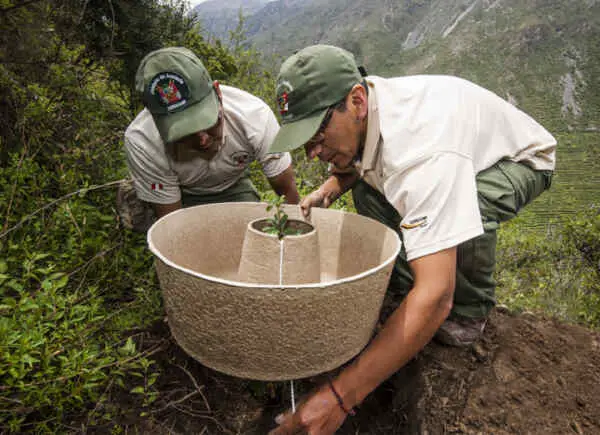
All you have to do is set it up, plant a seedling, walk away, and a tree will grow!
In arid areas, the survival rate for Cocoon-planted seedlings ranges from 80% and 95%, which is better than the 10% rate typical for manually planted seedlings.
Another benefit of planting trees with the seed Cocoon is you don’t need to establish or maintain expensive irrigation systems to repopulate trees, saving money, energy, and water.
16. Direct Air Capture Plant
The direct air capture (DAC) technology extracts CO2 directly from the atmosphere, effectively cleansing our air.
But there’s more.
The extracted CO2 can then be (1) permanently stored in geological formations, achieving negative emissions or (2) it can be used in other industries such as food processing.
So what was supposed to be an air pollutant can be utilized as a raw material.
And considering the fact that it is extremely difficult to totally get rid of carbon emissions today as certain sectors such as aviation, food production, heavy construction, etc. are difficult to decarbonise…
The direct air capture technology is one of the best sustainability innovations that can effectively remove CO2 from the atmosphere.
17. 3D Printing Construction System
We’ve seen or at least got an idea on how houses and skyscrapers are built.
They took weeks to complete and require massive equipment consuming gallons of fuel and blurching tons of carbon emissions.
Well, that is also about to change.
Construction firms today are using construction 3D printers.
It can be used to create individual construction components that are then assembled together or to “print” entire buildings as well!
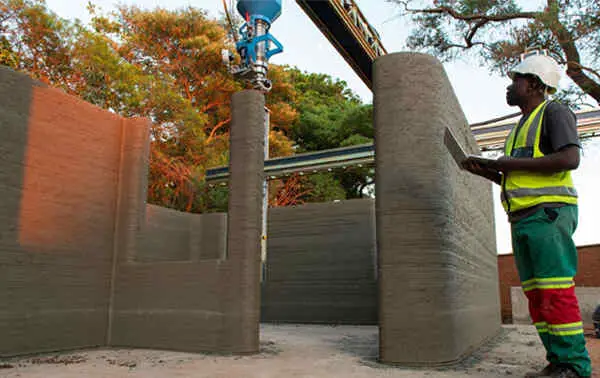
Large-scale construction 3D printers are capable of printing homes and structures faster than conventional methods and with less waste and more design freedom.
Other Recent Sustainability Innovations
18. Vegan Leather
Leather is a premium material in clothing and accessories and sadly, they are produced at the cost of poor animals’ lives.
Raising cattles and other animals to harvest leather is also one of the major causes of methane, one of the greenhouse gasses responsible for climate change.
But the invention of vegan leather might just be the solution.
Vegan leathers are eco-friendly fabrics made of plant materials.
One example is Piñatex, a plant-based leather made with pineapple wastes and leaves.

Other vegan leathers include cork leather, grape leather, and mushroom leather.
19. Edible Straws
Yes, you read that right.
A straw that you can eat after using.
Plastic straws have been an environmental hazard as it is one of the most common plastic trash in landfills.
Worse, tons of plastic straws have made their way to the ocean, harming poor turtles and other marine animals.
With an edible straw, you can continue to enjoy your favorite beverages while taking care of the planet.
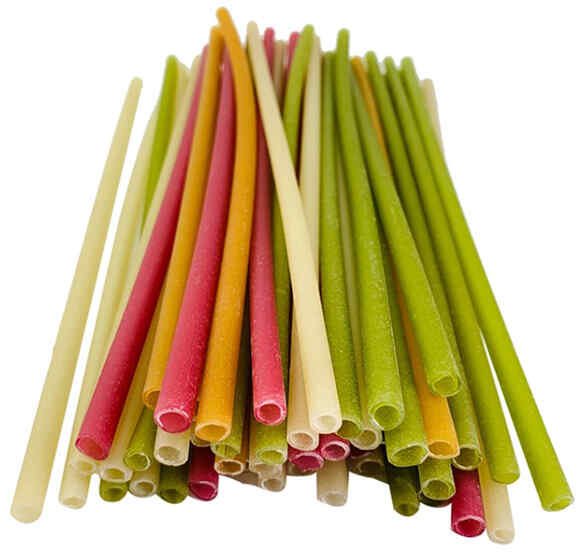
During the publication of this article, many companies are making their own version of edible straws using rice, sugar, and plant starches.
20. Crib A’ Glow
A Nigerian designer and mother, Virtue Oboro is making an effort to end baby jaundice.
The idea was born after Virtue had a traumatic experience when her son was diagnosed with jaundice.
To help prevent the same situation from happening to other mothers, Virtue designed Crib A’ Glow, a phototherapy unit that can be used at home by parents living in remote areas with limited or inconsistent access to electricity.
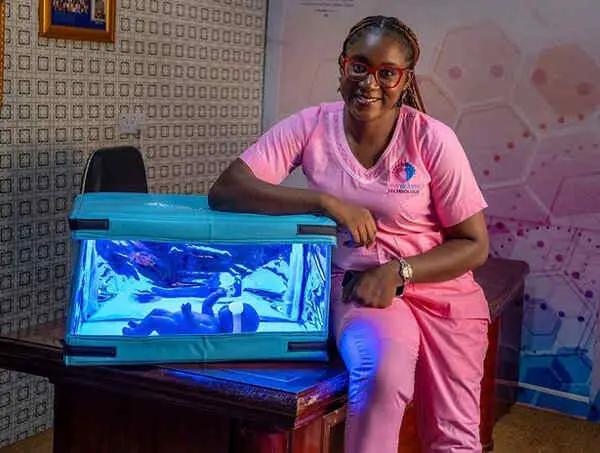
Unlike the conventional phototherapy units that use fluorescent bulbs which can lead to dehydration and other side effects, the Crib A’ Glow is a safe, solar-powered, foldable, and low-cost sustainable phototherapy unit that cures jaundice in newborn babies.
It does not have after-effects like skin burns, rashes and dehydration on the baby due.
Moreover, the features embedded in the unit makes it easy to be used in any part of the world, especially in rural areas since it does not require electricity to function.
Finally, Crib A’ Glow only costs one-sixth the price of a traditional phototherapy crib.
Final Thoughts
There you have it folks, the latest sustainability innovations designed to help reduce waste, pollution, and preserve mother Earth’s natural resources.
While these innovations are not perfect, they are some of the best potential solutions to counter the effects of industrialization and save our planet.
And we would also love to hear from you.
If you know other recent eco-friendly and sustainable innovations that we may have missed on this list, do let us know in the comment section below.

